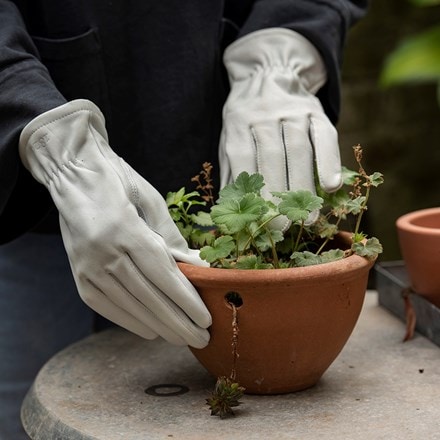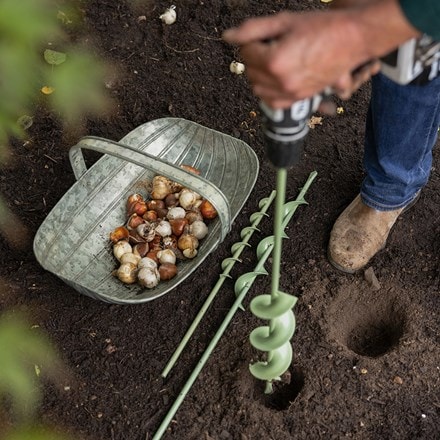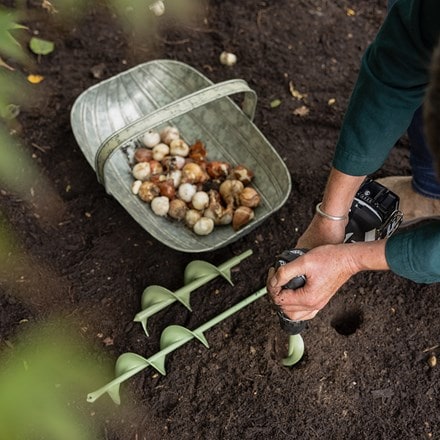Chelsea jewelled allium collection
allium collection
- 1 × collection | 20 bulbs
- £14.95 £0.75 each
- available to order from summer
- 2 + 1 FREE collections | 60 bulbs
- £29.90 £0.50 each
- available to order from summer
Delivery options
- Bulbs (only) £4.99
- Position: full sun
- Soil: moderately fertile, moist, well-drained soil
- Rate of growth: fast
- Flowering period: June
- Hardiness: fully hardy
Be dazzled by these bejewelled beauties. A mainstay of every Chelsea Flower Show, these contrasting alliums anchor many an herbaceous border in late May. Deep, globes of sumptuous deep plum-purple, and emerald centred white, rise on tall sturdy stems to offer a feast for the eyes, and food for pollinating insects.
In each collection you will receive the following:
- 10 x Allium nigrum: The grey-green leaves of this ornamental onion generally have started to die back when the flowers emerge in early summer. These sit on tall, sturdy stems forming flattish clusters that create a striking silhouette. Each creamy-white to pale lavender flower has a pronounced ovary at its heart, which looks a little like a green pearl, nestled in the centre. Grows to 75cm.
- 10 x Allium atropurpureum: A recent addition to our range of Alliums, that immediately shot to the top of our wish-lists. In early to mid summer, each upright stem is crowned with a rounded cluster of small flowers, which seem to hover like large, brilliantly coloured jewels above the foliage. Each flower is made up of deep pink to purple petals surrounding a blueberry-purple centre, which creates a vibrant and exciting contrast of colours. Their drumstick shape is great for adding diversity to the border, while their sturdy stems makes them ideal for cutting. If left in the border after the flowers have faded though, the subsequent seed heads will add months of structural interest. Grows to 75cm.
Allium bulbs are easy to grow in a sunny spot with freely drained soil, or a good quality potting compost. Ideally they should be planted in September or October, but could also be planted in early November in milder regions.
While keeping the size of the flowerhead in mind and avoiding overcrowding, dig holes roughly three times as deep as the diameter of the bulb and place them at the base, pointy side up before gently infilling and watering to settle them in.
In early spring, as growth begins, apply a balanced, slow-release fertiliser, and allow the plants to die back naturally and completely before tidying away.
While keeping the size of the flowerhead in mind and avoiding overcrowding, dig holes roughly three times as deep as the diameter of the bulb and place them at the base, pointy side up before gently infilling and watering to settle them in.
In early spring, as growth begins, apply a balanced, slow-release fertiliser, and allow the plants to die back naturally and completely before tidying away.
- Pets: TOXIC if eaten; Humans: Ornamental bulbs - not to be eaten




